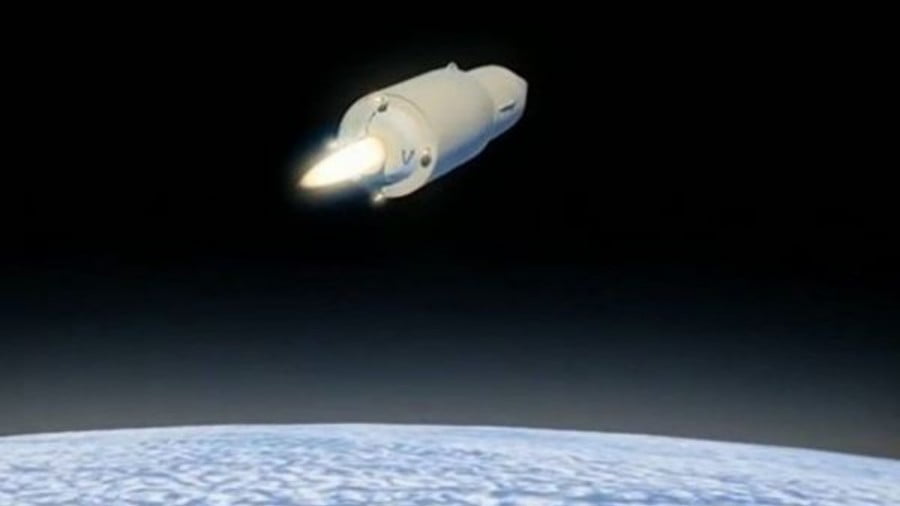Russia Deploys Its Avangard Glide Vehicle – the Unmatched Leader in Hypersonic Technology
On Oct. 12 CNBC reported that Russia had hit a snag in its development of its hypersonic weapon, because it was at the time unable to find a source for the critical carbon fiber components. The news agency stated that the Pentagon had doubts that the Avangard hypersonic glide vehicle (HGV) existed. Skepticism seems widespread. Some believe that Russia’s new super weapons are “virtual reality,” while others think they are “mostly hype.” In March, the National Interest cited Michael Kofman, a research scientist for the Center for Naval Analyses and a highly respected analyst, who offered his assurances that there was no chance Russia could field its hypervelocity boost-glide weapon by 2019. But history has shown that those who believed it to be just a bluff have been proven wrong.
According to recent Russian media reports, the Avangard hypersonic boost-glide system, one of the new super weapons that President Putin mentioned in his address to the Federal Assembly in March, went into production last summer and will be operational with the 13th Strategic Missile Forces division by the end of 2019. It will be deployed near Yasny, a town 502 kilometers (312 mi) southeast of Orenburg in the southern Urals, by the end of 2019.
Normally it takes two systems for a regiment to be combat ready by that time, but in this case that number will be increased to six. At least two regiments with six systems each are expected to be battle-ready by 2027. According to the state armaments program (GPV2027), twelve UR-100UTTKh (NATO: SS-19 Stiletto) missiles will be integrated into the Avangard hypersonic glide vehicles (HGVs). The deployment of the HGV might begin without additional flight tests. Eventually, the Sarmat RS-28 ICBM could be used to deliver the Avangard, potentially carrying a single, massive thermonuclear warhead with a yield exceeding two megatons.
The boost-glide weapon can fly at speeds of over Mach 20 or about 15,300 miles per hour (four miles per second). It could reach Washington in 15 minutes even if launched from Russia. There is no way to intercept it, as it moves in a cloud of plasma “like a meteorite.” The weapon is distinctive for its ability to withstand extreme heat during the final phase of its trajectory thanks to its heat-resistant titanium casing. Its in-flight temperature reaches 1,600-2,000° Celsius.
It is impossible to predict the direction of its approach. Installed on the 200-ton Sarmat, the Avangard could be sent into the desired orbit at an altitude of 100 km from Earth using a pre-booster, gliding to its target at a speed of Mach 20 (5-7 km/s) while maneuvering with the help of stabilizers. It can make rapid course changes in the atmosphere. Its signatures are quite different from those of traditional ICBMs. Advanced countermeasure systems increase its ability to penetrate missile defenses.
The Avangard is the first HGV in the world to have gone into production, as well as the first to travel at great altitude in the dense layers of the atmosphere while deftly maneuvering. According to General John Hyten, head of US Strategic Command, “We don’t have any defense that could deny the employment of such a weapon against us.”
Serial production of Sarmat ICBMs is scheduled to begin in 2021. The UR-100N UTTKn and the Sarmat could carry multiple Avangard glide vehicles.
Other ICBNs, such as the RS-24 Yars and RS-26 Rubezh, can potentially accommodate smaller Avangard-type vehicles should the New START Treaty not be extended. The tempo of the glide vehicle’s deployment and modernization can be expedited depending on the progress of the talks with the United States on strategic nuclear arms. Since its trajectory renders the Avangard immune to missile-defense systems, the HGV will become a powerful argument that can be wielded at that round table.
Long-range, high-precision hypersonic glide vehicles can be used in conventional conflicts to deliver prompt global strikes, including against those enemies who possess the air- and missile-defense capabilities to counter aerial targets, cruise missiles, and smaller- and medium-range ballistic missiles. The conventional Avangard can be used with the same efficiency as nuclear delivery vehicles, thus making escalation to a nuclear phase unnecessary under certain circumstances. The HGV does not violate the New START Treaty or any other international agreement.
The announcement of the plans to field the HGV as early as next year prove that Russia was not bluffing. This game-changing weapon not only exists, but is already in production. This is a slam dunk for the Russian defense industry and for those scholars who managed to solve the problem of how to tolerate immense heat during hypersonic flight. The US will have to play catch-up.
Photo: Russian Defense Ministry







